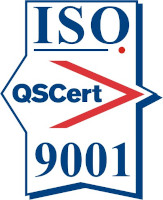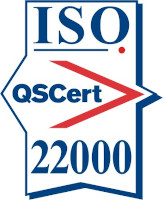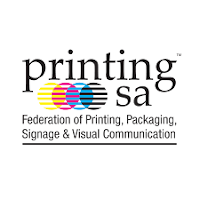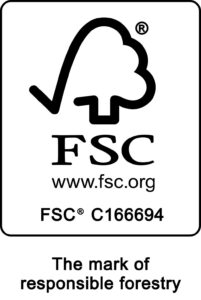We’re with you all the way
The following tools will assist you in your interaction with the Tandym team.
Chat with our Experts
Should you require any assistance with your pre-press requirements, please do not hesitate to reach out to our experts – they will be delighted to assist.
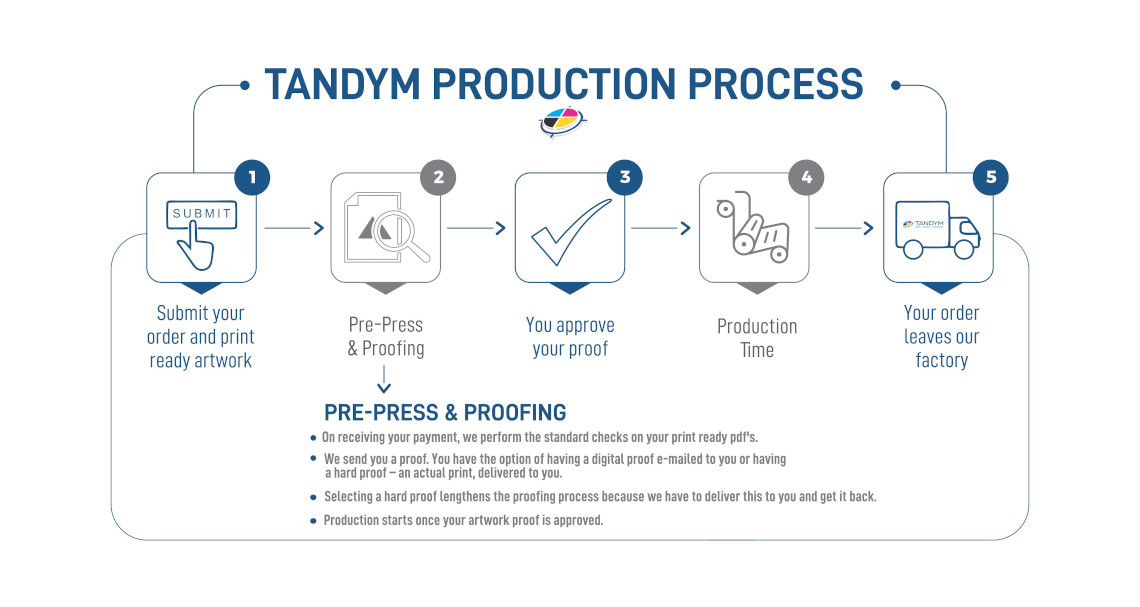
Tools to Help You
Right Click and Save As here for the Acrobat Job Options that could be used to generate print-ready PDF files.
File requirements:
- Centred on media
- Tick marks
- 3mm Bleed
- All fonts to be embedded
- Live area to be at least 4mm from the trim. Note: If material is for an IFC or IBC of a perfect bound book, one should allow at least 8mm on spine side for side glue.
Files can be supplied as single or multiple page PDF’s as long as they run in the correct page sequence.
Example: Singles
001_PubName.pdf
002_PubName.pdf
003_PubName.pdf
004_PubName.pdf
Example: Multiple pages
001_PubNamePage01-11.pdf
002_PubNamePage12.pdf
003_PubNamePage13-19.pdf
004_PubName Page20-96.pdf
Acid-free Paper
Paper made from pulp containing little or no acid so that it resists deterioration due to age. Also sometimes referred to as alkaline paper, archival paper, neutral pH paper, permanent paper or thesis paper.
Aqueous Coating
The process of coating paper in a water based substance to protect and enhance the printing underneath. A printing press applies the coating like ink.
Amendments
Changes made by a client to artwork at the proofing stage of job. These are usually made at an additional cost to the client.
Bleed
Space beyond the actual edge of the artwork that is provided for in layout and printed to afford margin for error when trimming down a page so that there is never white space on the edge of a page after trimming.
Blind Image
Elements of the artwork that are debossed, embossed or stamped, but not printed with ink or foiled onto the page.
Caliper
The thickness of paper or other substrates expressed in thousandths of an inch (mils or points), pages per inch (PPI), thousandths of a millimeter (microns) or pages per centimeter (PPC).
CMYK
The abbreviation for cyan, magenta, yellow and key (black). Commonly used to describe the four-colour printing process of offset printing. Tandym uses this printing method.
Collate
To organize the material to be printed in a specific order as requested.
Collating Marks
Mostly commonly used when printing books with sections that will be stitched together. Specific marks or signatures printed on the back of sections that indicate the correct order that the sections must be placed in before binding or stitching.
Color Control Bar
Strip of small blocks of color printed on a proof or press sheet to assist in evaluating features such as density and dot gain. Also called a color bar, a color guide or a standard offset color bar.
Color Correct
Adjusting the relationship between the process colors to achieve a perfect colour match.
Color Shift
Change in color result due to changes in register, ink densities, dot gain or converting between colour spaces (RGB to CMYK) during four-color or offset printing.
Creep
The tendency of middle pages of a folded signature extending slightly beyond outside pages. Also referred to as feathering, outpush, push out or thrust.
Crop Marks
Lines printed on artwork that indicate where the printer must trim the page. Also referred to as cut marks and tic marks.
Die
Device for cutting, scoring, stamping, embossing and debossing.
Die Cut
To cut irregular shapes in paper or paperboard using a die.
Digital Proofing
Page proofs produced through electronic memory transferred onto paper via laser or ink-jet or publishing online electronically.
Dot Gain
Phenomenon of halftone dots printing larger on paper than they are on films or plates, reducing detail and lowering contrast. Also called dot growth, dot spread and press gain.
Dots-per-inch
Measure of resolution of input devices such as scanners, display devices such as monitors, and output devices such as laser printers, imagesetters and monitors. Abbreviated DPI. Also called dot pitch.
Dry Back
Phenomenon of printed ink colors becoming less dense as the ink dries.
Encapsulated PostScript file
Computer file containing both images and PostScript commands. Abbreviated EPS file.
Estimate
Price that states what a job will probably cost. Also called bid, quotation and tender.
Fit
Refers to ability of film to be registered during stripping and assembly. Good fit means that all images register to other film for the same job.
Grain Direction
Predominant direction in which fibers in paper become aligned during manufacturing. Also called machine direction.
Grain Long Paper
Paper whose fibers run parallel to the long dimension of the sheet. Also called long grain paper and narrow web paper.
Grain Short Paper
Paper whose fibers run parallel to the short dimension of the sheet. Also called short grain paper and wide web paper.
Grammage
Basis weight of paper in grams per square meter (gsm).
Imposition
Arrangement of pages on mechanicals or flats so they will appear in proper sequence after press sheets are folded and bound.
ISBN
A number assigned to a published work and usually found either on the title page or the back of the title page. Considered an International Standard Book Number.
Job Number
A number assigned to a specific printing project in a printing company for use in tracking and historical record keeping.
Laminate
A thin transparent plastic sheet (coating) applied to usually a thick stock (covers, post cards, etc.) providing protection against liquid and heavy use, and usually accents existing color, providing a glossy (or lens) effect.
Loupe
Lens built into a small stand. Used to inspect copy, film, proofs, plates and printing. Also called glass and linen tester.
Mock Up
A reproduction of the original printed matter and possibly containing instructions or direction.
Moire
Undesirable pattern resulting when halftones and screen tints are made with improperly aligned screens, or when a pattern in a photo, such as a plaid, interfaces with a halftone dot pattern.
Mottle
Spotty, uneven ink absorption. Also called sinkage. A mottled image may be called mealy.
Nipping
In the book binding process, a stage where air is expelled from it’s contents at the sewing stage.
Page Count
Total number of pages that a publication has. Also called extent.
Perfect Bind
To bind sheets that have been ground at the spine and are held to the cover by glue. Also called adhesive bind, cut-back bind, glue bind, paper bind, patent bind, perfecting bind, soft bind and soft cover. See also Burst Perfect Bind.
Perfecting Press
Press capable of printing both sides of the paper during a single pass. Also called duplex press and perfector.
Prepress
Camera work, color separations, stripping, platemaking and other prepress functions performed by the printer, separator or a service bureau prior to printing. Also called preparation.
Printer Spreads
Mechanicals made so they are imposed for printing, as compared to reader spreads.
Reader Spread
Mechanicals made in two page spreads as readers would see the pages, as compared to printer spread.
Screen Ruling
Number of rows or lines of dots per inch or centimeter in a screen for making a screen tint or halftone. Also called line count, ruling, screen frequency, screen size and screen value.
Shingling
Allowance, made during paste-up or stripping, to compensate for creep. Creep is the problem; shingling is the solution. Also called stair stepping and progressive margins.
Spine
Back or binding edge of a publication
Spiral Bind
To bind using a spiral of continuous wire or plastic looped through holes. Also called coil bind.
Spot Color or Varnish
One ink or varnish applied to portions of a sheet, as compared to flood or painted sheet.
Tip In
Usually in the book arena, adding an additional page(s) beyond the normal process (separate insertion).
Undercolor Removal
Technique of making color separations such that the amount of cyan, magenta and yellow ink is reduced in midtone and shadow areas while the amount of black is increased. Abbreviated UCR.
Doing Business with Us
Take a look at the documents below which will assist you as you consider Tandym or begin working with us.


